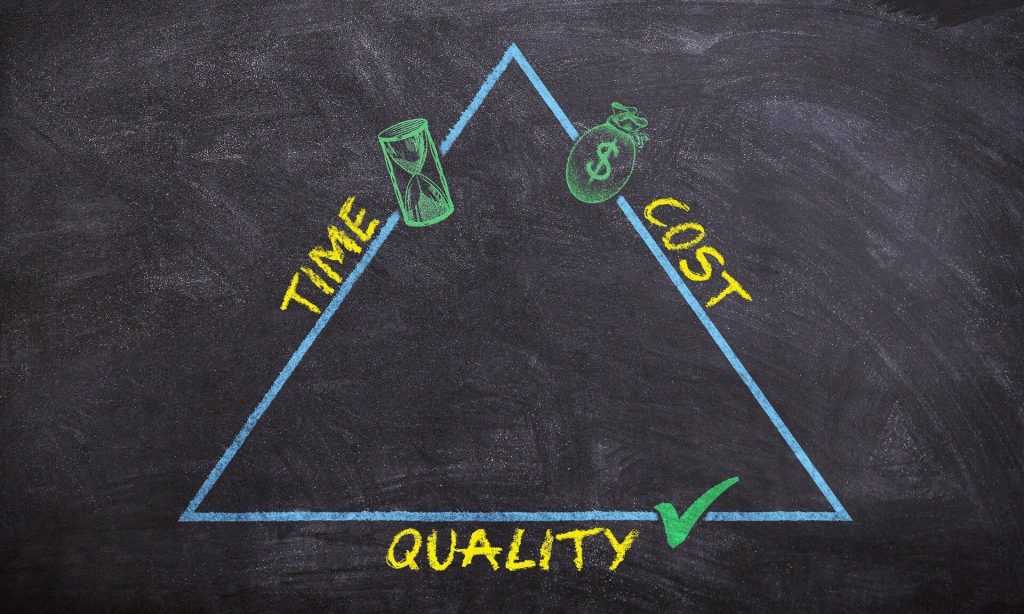Have you ever completed a job and questioned why the end effect was so different from what you had planned? May be due to a lack of milestones in project management. Using and creating Project Milestones allows you to spot problems sooner and take the necessary steps to deliver the desired outcome.
A milestone is a point in a project’s progress that marks a transition or stage. Milestones are useful in project management because they highlight important events and demonstrate how your project is progressing.
Milestones serve as checkpoints throughout your project, ensuring that you stay on schedule. You’re just monitoring activities without project milestone tracking, and you’re not necessarily on the proper track in your project.
Table of Contents
What is a milestone in project?
A milestone is a significant, well-defined progress point on a project’s timeline. In general, milestones denote a significant change or step in the progress of a project. Milestones are used in project management software like Projectopia to divide deadlines into stages.
Milestones are often established during the project planning phase and updated as the project continues. Consider milestones to stop and go signs. They are visual reference points that help to break down a project into small segments, organize it, and anchor it to make it less intimidating.
Major events and pending decisions must be tracked by all project managers. Setting milestones can aid in this process. Milestones inform everyone involved about a project’s overall ‘lifespan’ and what has to be accomplished along the route.
Without milestones, project managers are only able to keep track of a slew of individual tasks. Task completion is plainly crucial, but keeping projects on track to assure effective, timely completion and meeting all targets requires a wider picture.
Now you must have got a quick idea of what are milestones in a project and why are milestones important.
What’s the difference between milestones and tasks?
You’re not constructing a rocket here; instead, you’re constructing a project plan, and the components aren’t particularly complicated. On larger projects, or if the project you’re managing isn’t within your area of expertise, distinguishing between tasks and milestones might be tough (yet).
How to incorporate crucial milestones into your project schedule?
Project milestones can assist you to communicate what’s going on with your project in addition to showing progress.
Milestones provide an easy method to see significant dates or deliverables at a glance when designing a Gantt chart. Anyone looking at your Gantt chart can see exactly where items are at any given time.
Now that you know what a milestone is and why it’s important, let’s delve a bit deeper and look at three common ways milestones may help you with your projects.
Keeping track of deadlines for deliverables is a lot easier now.
Without a list of deadlines, no strategy is complete! Using the project management milestones and deliverables technique is the greatest way to make them stand out. What exactly does this imply? Create project milestones for the deliverables!
Why are you doing this? It’s no secret that not everyone wants to read over your lovely project plan looking for important dates. The majority of individuals, including your teammates, desire a high-level view of important dates and events. Milestones are ideal for this because they are marked in a unique fashion in project plans (typically with a diamond symbol).
While you should identify the actions and effort that build up to a project milestone, make sure to include the milestone at the end of those tasks to indicate that the deliverable has been delivered or even presented.
Why is it vital to set a project milestone?
Milestones help everyone involved in the project. Clients can better comprehend the development because team members are more productive. Project managers, on the other hand, find milestones useful and use them to stay on track with the original project plan.
The project’s team
The team feels accomplished and finds it easier to work while focusing on short-term objectives. Employees feel appreciated and respected when major achievements are celebrated. Furthermore, changing the monotonous work cycle might have a big impact on your team’s productivity.
Milestones are a proven and true approach to keeping project team members engaged and motivated throughout the project’s lifetime, especially in the case of complex long-term initiatives.
Clients and other interested parties
They find it easier to follow project progress and stay informed about where the project is at any given time. Stakeholders also gain a better grasp of who is responsible for what at each point of the execution phase, which improves project accountability and transparency.
Managers of projects
Milestones, according to project managers all around the world, are a huge assistance in adopting successful project management concepts in their projects. Assigning project milestones will help managers perform better even when they are managing numerous projects at the same time.
Another aspect to remember about project milestones is that they have no bearing on the overall timeline of your project because they are simply checkpoints that must be passed. You may also set up automated updates at the start to ensure that everyone receives a simple notification when a single milestone is reached.
Other terms vs. milestone
Many project management words may appear to be quite similar, but understanding their differences is critical to avoid ambiguity.

What is the significance of Milestones?
Milestones are essential to project management success for the following reasons:
They aid in the tracking of deadlines – establishing key milestones early in a project’s planning phase will aid project managers in staying on top of all associated deadlines.
- Identify potential bottlenecks – many projects rely on external teams or partners to complete tasks. Delays and compression are likely if these external factors aren’t monitored. To move forward, many projects rely on the contributions of other teams or partners. There’s a good possibility you’ll forget to follow up on those external elements if you don’t keep track of them somewhere. If you’re working on a project that relies on someone or something outside of your project, it’s critical to include these deliverables as project milestones.
- Easily identify essential dates – Using milestones allows you to view the full picture and quickly identify key dates and events. Perhaps you or your entire team will need to leave the workplace for a project-related obligatory training session. Are there any days between now and the completion of your project that could have an impact on it? Perhaps your team will be absent from the office due to required training. Maybe there’s a board meeting you’re supposed to go to. When planning a project, it’s critical to keep all of these essential events in mind because they may have an impact on the timeline. Why not make them project milestones so you can keep track of everything in one place?
- Increases the project’s visibility – increased visibility can make project management easier. Everyone can see how far along a project is and how much work is left.
- Allocating time and resources is crucial to the effective completion of any project. Managers can use milestones to properly distribute resources so that projects are completed on time and on budget.
- Payments to vendors are frequently based on milestone completion; maintain track of milestone completion and timing payments to important suppliers accordingly.
- Stakeholder involvement varies per milestone; typically, as a milestone approaches, stakeholders become more involved. Use milestones to determine when stakeholders should become more involved in the project.
- Accountability – project teams must be aware of their responsibilities. Milestones encourage everyone to take responsibility for their role.
- Demonstrates Measures of success’ – it’s fantastic to be able to quantify your achievements! Completing and passing all of your important milestones is a rewarding and obvious approach to indicate a project’s overall success.
How Projectopia can help in achieving milestones in project management?
Projectopia is a dedicated project management plugin on WordPress which comes with lots of exciting features. It is specifically designed to help project managers handle multiple tasks together. From projects progress to client interaction, it has everything available in one spot.
The first step involves adding milestones in Projectopia which can be done once you have finished doing the basic set-up of the quote.
Here’s how we can set milestones in Projectopia:
- Scroll towards “Milestones and Tasks Metabox” and click on “Add Milestone”
- A “model window” will pop up on the screen. You can add your details like – Title, Start date, Deadline, and cost.
- Click on “Add Milestone” after filling in all the above details. That’s it! You’re done.
Next To-Do: You can now move on to the “Add Tasks” section where you will be able to add and assign tasks and keep monitoring their progress.
Final Words
Project milestones can motivate your team and assist you in project management by boosting project execution and reporting. Using a project management platform like Projectopia to create and track milestones is simple. We are here to provide you with clarity about your project from the start. It’s vital to have all stakeholders on the same page from the start if you want to get the most out of your project.
